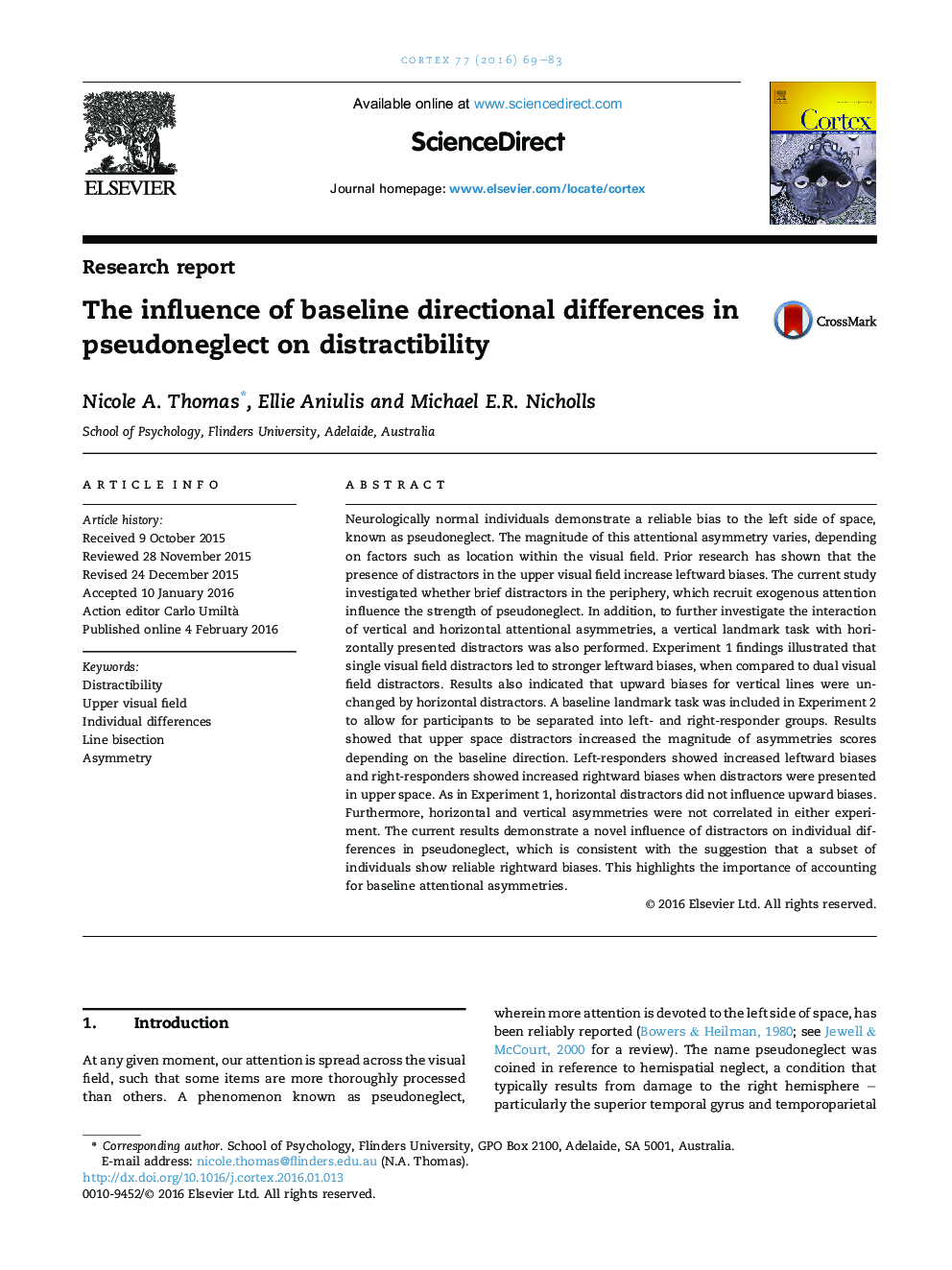| Article ID | Journal | Published Year | Pages | File Type |
|---|---|---|---|---|
| 7313168 | Cortex | 2016 | 15 Pages |
Abstract
Neurologically normal individuals demonstrate a reliable bias to the left side of space, known as pseudoneglect. The magnitude of this attentional asymmetry varies, depending on factors such as location within the visual field. Prior research has shown that the presence of distractors in the upper visual field increase leftward biases. The current study investigated whether brief distractors in the periphery, which recruit exogenous attention influence the strength of pseudoneglect. In addition, to further investigate the interaction of vertical and horizontal attentional asymmetries, a vertical landmark task with horizontally presented distractors was also performed. Experiment 1 findings illustrated that single visual field distractors led to stronger leftward biases, when compared to dual visual field distractors. Results also indicated that upward biases for vertical lines were unchanged by horizontal distractors. A baseline landmark task was included in Experiment 2 to allow for participants to be separated into left- and right-responder groups. Results showed that upper space distractors increased the magnitude of asymmetries scores depending on the baseline direction. Left-responders showed increased leftward biases and right-responders showed increased rightward biases when distractors were presented in upper space. As in Experiment 1, horizontal distractors did not influence upward biases. Furthermore, horizontal and vertical asymmetries were not correlated in either experiment. The current results demonstrate a novel influence of distractors on individual differences in pseudoneglect, which is consistent with the suggestion that a subset of individuals show reliable rightward biases. This highlights the importance of accounting for baseline attentional asymmetries.
Related Topics
Life Sciences
Neuroscience
Behavioral Neuroscience
Authors
Nicole A. Thomas, Ellie Aniulis, Michael E.R. Nicholls,
